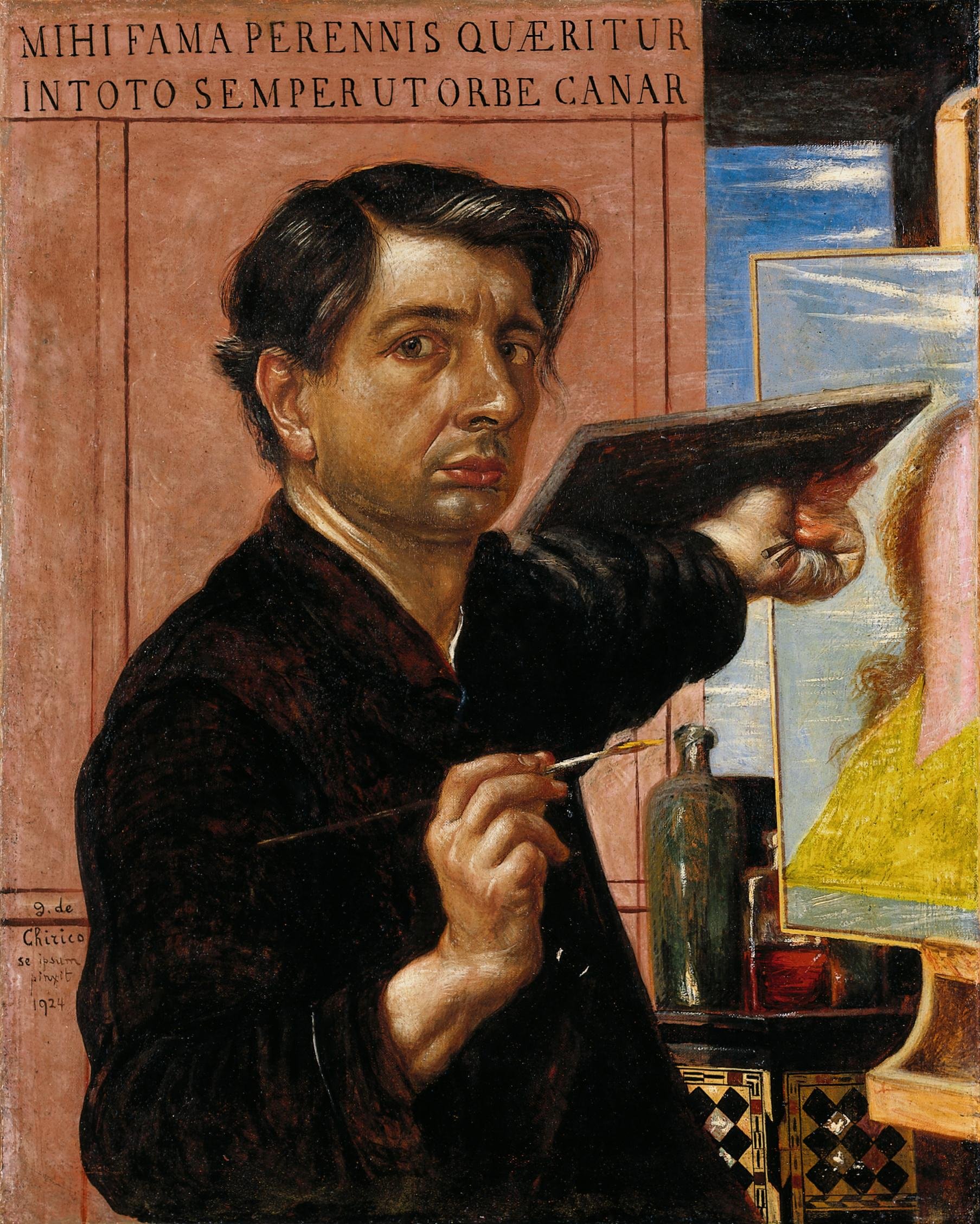Giorgio de Chirico
Self-Portrait, 1924

Giorgio De Chirico
Self-Portrait, 1924
Kunst Museum Winterthur, Ankauf mit Mitteln der Gebrüder Sulzer AG aus Anlass ihres 125-jährigen Bestehens, 1959
Foto: SIK-ISEA, Zürich (Lutz Hartmann)
The Italian Giorgio de Chirico painted his mysterious pictures in Paris before the First World War. He called his art "Pittura metafisica," a style that had great influence on European painting. But de Chirico didn’t want to belong to those described as modern painters, and in 1918 he turned his attention to the paintings of the Old Masters. In numerous self-portraits he presented himself as a painter in the classical tradition.
In the Winterthur self-portrait from 1924 he is standing in front of his easel and an unfinished painting holding a brush and colour palette. The bottles with the ingredients for the paint are standing on a small table. De Chirico attached great importance to painting like the Old Masters and used temperas, not oils. Through this, the craft took on a new meaning. De Chirico wrote a treatise on painting techniques in the same year.
His pose imitates that of the Swiss painter, Arnold Böcklin, who also portrayed himself in this posture. De Chirico had seen Böcklin’s work in Munich where he studied for a short time. He was fascinated by Böcklin’s capacity for realism and poetic fantasy. In this self-portrait De Chirico is playing his role as painter. The scene is emotive, and is enhanced by the Latin inscription, which says: "I seek enduring fame, that my praises may ever be sung throughout the world."


